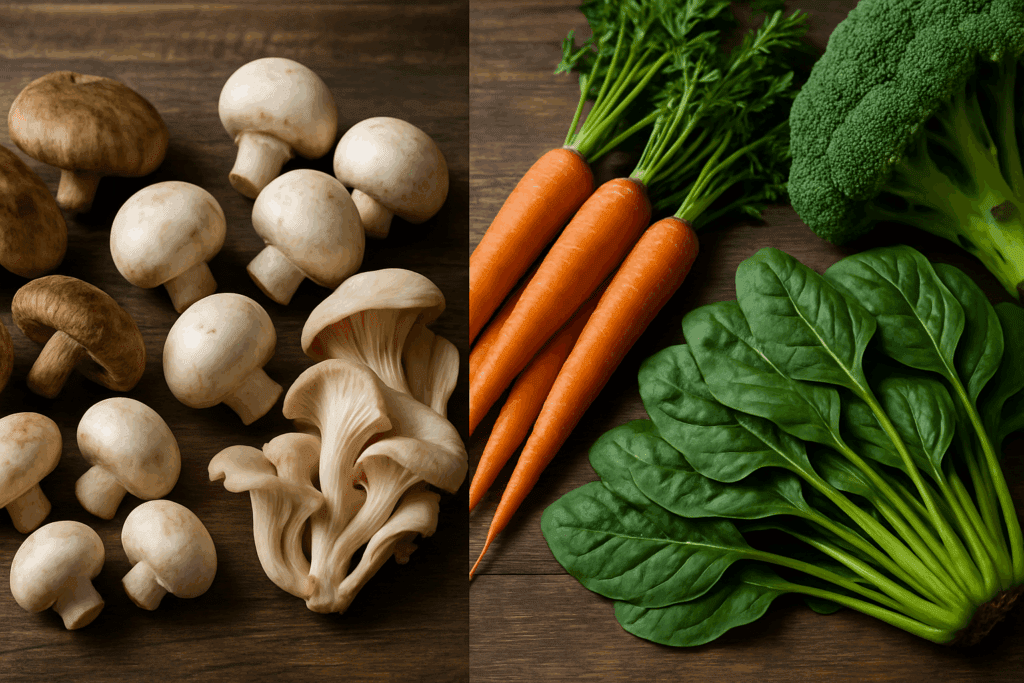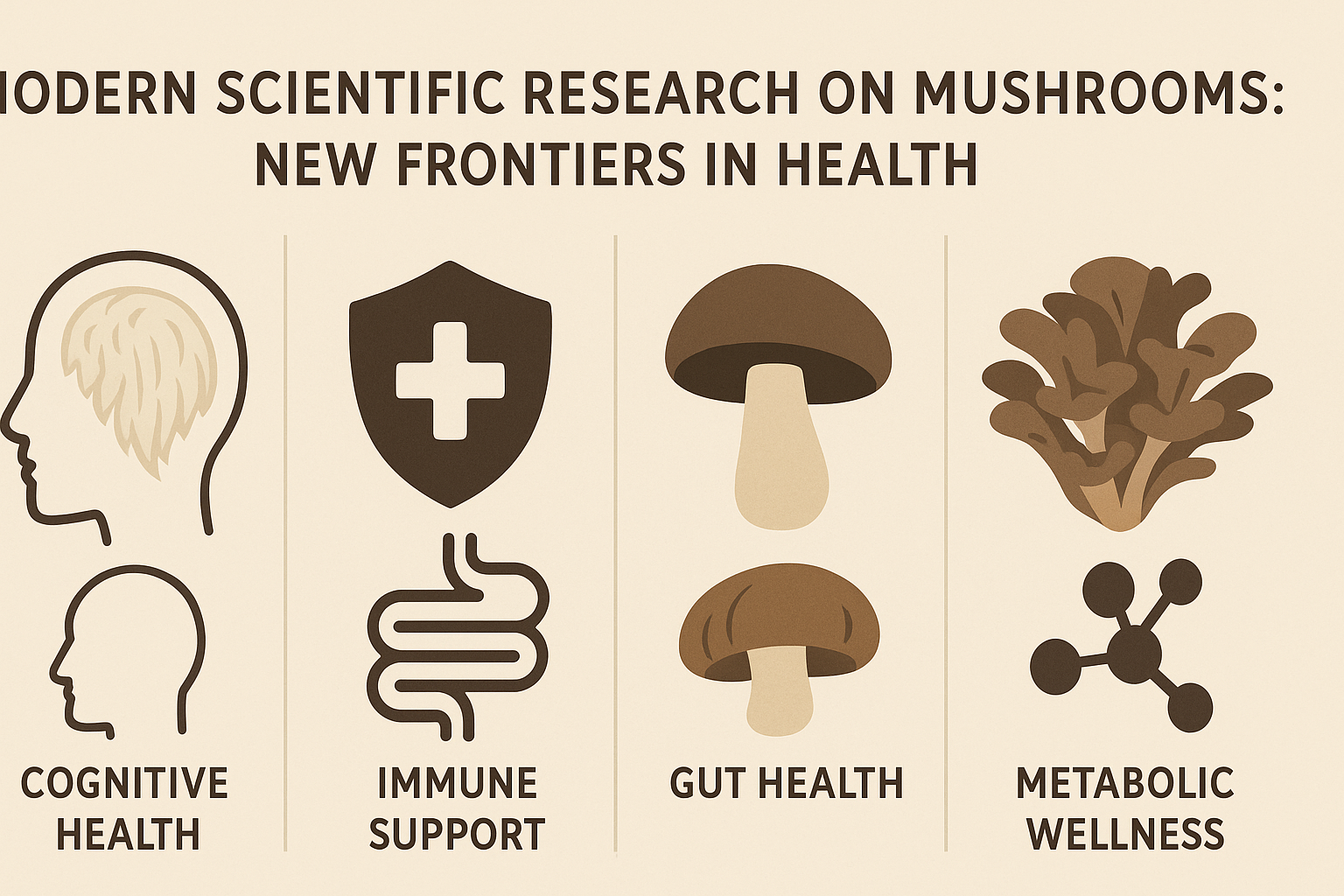Introduction: Unlocking the Mysteries of Mushrooms
Mushrooms have long captivated human imagination, spanning ancient civilizations, traditional healing practices, and contemporary science. As our understanding of nutrition and natural health deepens, so too does our interest in these extraordinary organisms. But exactly what are mushrooms, and how do they fit into our broader understanding of food, medicine, and the natural world? With more people seeking holistic approaches to wellness, mushrooms have stepped into the spotlight, praised for their unique biological properties and wide-ranging health benefits. This exploration will dive deep into mushroom characteristics, nutritional profiles, and their profound influence on natural health. Along the way, we’ll naturally and expertly address questions such as what is a mushroom considered, are mushrooms vegetables, what is the source of mushroom, and what are mushrooms made of, delivering a comprehensive and engaging journey into the fascinating world of fungi.
You may also like: How Lion’s Mane Supplements May Support ADHD and Cognitive Clarity: What Science Says About Lions Mane for Focus and Brain Health
Understanding What Mushrooms Are: A Scientific and Culinary Perspective
At first glance, mushrooms often occupy the same culinary space as vegetables, leading many to casually group them with carrots, spinach, or broccoli. However, when asking “what are mushrooms,” it’s essential to recognize that, scientifically, mushrooms are fungi, not plants. Unlike vegetables, mushrooms do not photosynthesize; instead, they derive nutrients through the breakdown of organic material. Their distinct biological classification sets them apart, yet their versatile culinary applications often blur these lines in the minds of consumers.
So, what is a mushroom considered? From a botanical standpoint, mushrooms are the fruiting bodies of certain fungi, emerging from a network of mycelium—a vast, threadlike structure that lives underground or within decaying organic matter. This unique origin story distinguishes them from typical plant-based foods, offering a glimpse into their complex and often hidden world. In culinary terms, however, mushrooms are treated similarly to vegetables due to their flavor, texture, and role in recipes, creating an interesting dual identity that enriches their cultural significance.

Are Mushrooms Vegetables? Clarifying a Common Misconception
While mushrooms may appear alongside vegetables on supermarket shelves, the question “are mushrooms vegetables” requires a more nuanced answer. Biologically, mushrooms do not meet the criteria to be classified as vegetables. Vegetables are parts of plants—such as roots, stems, and leaves—whereas mushrooms belong to the kingdom Fungi. This kingdom is distinct from both the plant and animal kingdoms, making fungi a separate life form altogether.
In nutritional discussions, however, mushrooms often “play the role” of vegetables, offering vital nutrients like fiber, antioxidants, and B vitamins. This functional overlap is why many dietary guidelines group mushrooms with vegetables for simplicity’s sake. Yet understanding that mushrooms are fundamentally different helps underscore their unique nutritional and medicinal properties. Appreciating these differences enhances our ability to use them effectively in holistic wellness approaches, acknowledging the value they offer beyond conventional plant foods.

What Is the Source of Mushroom Growth and Development?
When considering “what is the source of mushroom,” it is crucial to understand their intricate relationship with their environment. Mushrooms arise from spores, microscopic units capable of developing into a new organism. These spores spread via wind, water, or animal carriers, landing in nutrient-rich environments where they germinate and form mycelium.
Mycelium acts as the foundational network, penetrating soil, wood, or other organic materials to extract nutrients. When environmental conditions align—sufficient moisture, optimal temperature, and appropriate oxygen levels—the mycelium produces fruiting bodies: the mushrooms we recognize. This process showcases the deep connection between fungi and their ecosystems, emphasizing how mushrooms serve as critical decomposers, recycling nutrients and supporting soil health. Understanding the source of mushroom growth highlights not only their biological marvels but also their ecological significance.
What Are Mushrooms Made Of? A Look Inside Their Structure
Delving into “what are mushrooms made of” reveals a sophisticated internal composition that contributes to their culinary appeal and health benefits. Mushrooms are predominantly water, accounting for approximately 90% of their total weight. Beyond this, they contain a rich blend of proteins, carbohydrates, fiber, and trace fats, making them a nutritionally dense food.
Structurally, mushrooms feature a cap (pileus), gills (lamellae), a stalk (stipe), and sometimes a volva or ring. Each part serves a specific function: the gills house spores essential for reproduction, while the stalk elevates the cap to facilitate spore dispersal. On a microscopic level, mushroom cells are fortified with chitin, a resilient polysaccharide also found in the exoskeletons of crustaceans. This cellular makeup not only distinguishes mushrooms from plants but also contributes to their unique texture and mouthfeel when eaten. Understanding what mushrooms are made of provides insight into their biological ingenuity and their value as a food source.

Mushroom Characteristics: Diversity and Complexity
The phrase “mushroom characteristics” encompasses a wide range of features, from their ecological roles to their morphological diversity. Some mushrooms exhibit bioluminescence, emitting an eerie glow in forested environments. Others produce potent bioactive compounds with antibiotic, antiviral, or psychoactive properties, showcasing the biochemical complexity within the fungal kingdom.
Mushroom shapes, sizes, colors, and growth habits vary dramatically, reflecting their adaptation to diverse ecological niches. Edible mushrooms like Agaricus bisporus (the common white button mushroom) differ significantly from medicinal species like Ganoderma lucidum (reishi) or culinary delicacies like Tuber melanosporum (black truffle). Understanding mushroom characteristics allows researchers and enthusiasts alike to appreciate the astounding diversity of forms and functions fungi embody. This diversity is a testament to the evolutionary resilience of fungi and their profound importance across ecosystems.
Nutritional Info: What Mushrooms Offer to the Human Diet
Mushroom info related to nutrition reveals a powerful yet often underestimated food source. Despite their low calorie count, mushrooms are nutritionally potent, offering a spectrum of essential vitamins and minerals. Key nutrients include B vitamins (riboflavin, niacin, and pantothenic acid), selenium, potassium, and copper. They also provide antioxidants like ergothioneine and glutathione, compounds that support cellular health and combat oxidative stress.
Dietary fiber found in mushrooms aids digestive health, while their umami flavor enhances the palatability of low-sodium or plant-based diets. Some varieties, such as shiitake and maitake, are noted for their beta-glucans—specialized fibers that can modulate immune function. By integrating mushroom info into daily dietary choices, individuals can harness a rich reservoir of nutrients critical for maintaining vitality and resilience.

Mushrooms in Traditional Medicine: A Time-Honored Legacy
Historical mushroom information paints a vivid picture of their use in traditional medicine. Ancient cultures, including those in China, Egypt, Greece, and Central America, revered mushrooms for their health-promoting properties. Reishi mushrooms were hailed as “the mushroom of immortality” in traditional Chinese medicine, used to enhance longevity and vitality.
Indigenous peoples employed mushrooms like chaga and cordyceps to boost energy, endurance, and immune strength. Modern scientific validation of these traditional uses continues to build, with research exploring the potential of mushrooms for supporting immune function, mitigating inflammation, and even enhancing cognitive performance. This legacy of use enriches our contemporary understanding and invites further exploration into the therapeutic potential of fungi.
Modern Scientific Research on Mushrooms: New Frontiers in Health
Recent advances in mushroom research are shedding new light on their health benefits. Studies have explored the neuroprotective effects of lion’s mane mushrooms (Hericium erinaceus), with findings suggesting potential benefits for cognitive function and nerve regeneration. Similarly, turkey tail mushrooms (Trametes versicolor) have gained attention for their polysaccharide-K (PSK) content, which may support immune system health, particularly in oncology settings.
Emerging research also investigates the potential of mushrooms in managing metabolic disorders, improving gut microbiota composition, and even supporting emotional well-being. By expanding our repository of mushroom information through rigorous scientific inquiry, we move closer to fully understanding and utilizing their vast potential within integrative health frameworks.
How Mushrooms Fit into Natural Health Strategies
As more individuals seek natural approaches to wellness, mushrooms offer a versatile and evidence-based option. Their adaptogenic qualities, immune-modulating effects, and nutritional richness position them as valuable allies in preventive health strategies. Whether incorporated through dietary means, supplements, or functional foods, mushrooms can complement a broad range of health goals.
Practical integration might include adding shiitake mushrooms to stir-fries, supplementing with reishi extracts for stress resilience, or incorporating lion’s mane powder into smoothies for cognitive support. By weaving mushroom info into everyday health routines, individuals can take proactive steps toward greater vitality and resilience in a holistic and sustainable manner.

Frequently Asked Questions: What Are Mushrooms? Exploring Mushroom Characteristics, Nutritional Info, and Their Role in Natural Health
1. How do mushrooms differ from vegetables nutritionally?
While many people ask “are mushrooms vegetables,” the nutritional profiles of mushrooms and traditional vegetables reveal fascinating distinctions. Unlike vegetables, which often serve as carbohydrate-rich energy sources, mushrooms are notably higher in specific antioxidants such as ergothioneine and glutathione. These compounds have garnered scientific interest for their potential roles in cellular protection and longevity. Furthermore, mushroom info shows that some species, like shiitake and maitake, offer polysaccharides that actively modulate immune responses—an advantage not typically found in common vegetables. Understanding what mushrooms are from a nutritional perspective highlights their unique bioactive contributions to a healthy diet.
2. What ecological role do mushrooms play in the environment?
When we consider “what is the source of mushroom” and its broader ecological impact, mushrooms emerge as critical ecosystem engineers. Fungi break down organic matter that would otherwise accumulate, facilitating the recycling of nutrients back into the soil. This decomposition process enriches plant life, indirectly supporting diverse animal populations. Moreover, many tree species form symbiotic relationships with fungi, exchanging carbohydrates for water and minerals through a network called mycorrhiza. Mushroom characteristics reveal that without fungi, ecosystems would struggle to maintain balance, showcasing the profound influence mushrooms exert beyond their culinary uses.
3. Why are mushrooms often classified separately from plants and animals?
To answer “what is a mushroom considered,” we must delve into biological taxonomy. Mushrooms belong to their own kingdom, Fungi, because they display characteristics distinct from both plants and animals. They absorb nutrients through external digestion, secrete enzymes to break down their food, and possess cell walls made of chitin rather than cellulose. This unique combination of traits warrants a separate classification. When examining mushroom information, it becomes evident that fungi represent a third major branch of complex life, deserving recognition for their evolutionary independence and critical roles.
4. How does the structure of a mushroom influence its function?
Exploring “what are mushrooms made of” leads to fascinating insights into form and function. The structure—comprising the cap, gills, stalk, and sometimes a volva—facilitates the dispersal of spores, which is vital for reproduction. Gills under the cap provide an enormous surface area for spore production, maximizing reproductive efficiency. The stalk elevates the cap, enhancing spore dispersal by wind or animal contact. Even microscopic features like spore ornamentation or cap textures play roles in environmental adaptation. Thus, the distinct mushroom characteristics of each species are not random but are evolutionary responses to survival challenges.
5. Can mushrooms be sustainably cultivated, and why does it matter?
Given increasing interest in sustainable agriculture, understanding “what is the source of mushroom” in cultivation practices is critical. Mushrooms can be grown using agricultural waste products like straw, corn cobs, and sawdust, minimizing environmental impact. Compared to traditional crops, mushroom farming requires less land, water, and energy, making it an attractive option for sustainable food systems. Furthermore, spent mushroom substrate can be recycled into organic fertilizer, closing the loop on waste. Mushroom info suggests that integrating fungi into agricultural models could contribute to greater global food security and environmental stewardship.
6. How are medicinal mushrooms different from culinary ones?
When exploring “what are mushrooms” in both culinary and medicinal contexts, distinctions emerge based on biochemical composition. Culinary mushrooms like button or portobello mushrooms are valued primarily for taste and nutrition, while medicinal species such as reishi, turkey tail, and cordyceps contain higher concentrations of specific bioactive compounds. These compounds include triterpenoids, beta-glucans, and polysaccharides with immune-modulating, anti-inflammatory, and adaptogenic properties. Mushroom information reveals that while all mushrooms offer health benefits, medicinal varieties are often utilized in extract form to maximize therapeutic efficacy. Their specialized properties continue to inspire pharmacological research worldwide.
7. What role do mushrooms play in emerging areas of mental health research?
The growing field of psychedelic-assisted therapy introduces a new layer to “what is a mushroom considered” in modern medicine. Psilocybin, a naturally occurring compound in certain mushrooms, has been shown in clinical studies to help alleviate treatment-resistant depression, PTSD, and end-of-life anxiety. Unlike traditional psychiatric medications, psilocybin appears to foster profound neuroplasticity and emotional breakthroughs. While these mushrooms differ from common edible varieties, they broaden our understanding of mushroom characteristics and their potential to influence human well-being on psychological levels. Mushroom info on these therapeutic applications continues to expand, with researchers calling for responsible, evidence-based use.
8. Are all mushrooms safe to eat, and how can consumers distinguish them?
Though many edible varieties offer exceptional health benefits, understanding “what are mushrooms made of” is crucial for distinguishing safe from dangerous species. Some toxic mushrooms contain potent mycotoxins that can cause severe organ damage or death, even in small amounts. Unlike safe varieties, these harmful mushrooms often mimic edible ones, making foraging risky without proper expertise. Mushroom information suggests that consumers should rely on reputable sources for wild mushrooms or opt for commercially cultivated varieties. Education on mushroom characteristics, such as spore print color and gill attachment, can also empower foragers to make safer choices.
9. How is biotechnology advancing our understanding of mushrooms?
Modern biotechnology is reshaping “what are mushrooms” in terms of applications far beyond food. Scientists are engineering fungi to produce biodegradable materials, new antibiotics, and even biofuels. Advances in genomic sequencing allow researchers to explore previously inaccessible fungal species, potentially unlocking new medicines and industrial processes. Mushroom characteristics like rapid growth, environmental adaptability, and enzymatic diversity make fungi ideal candidates for biotechnological innovation. The future of mushroom info points toward a world where fungi not only nourish but also sustain and heal on global scales.
10. How can incorporating mushrooms into your diet enhance long-term health?
Understanding “what is a mushroom considered” in nutritional planning can dramatically impact long-term wellness. Including a variety of mushrooms—from shiitake and maitake to oyster and lion’s mane—introduces a wide array of antioxidants, fibers, and immune-supportive compounds. Unlike many processed foods, mushrooms offer nutrient density without excessive calories or sodium, supporting weight management and cardiovascular health. Emerging mushroom information highlights their role in maintaining healthy gut microbiota, which has cascading effects on immunity, mental clarity, and inflammation regulation. Thus, weaving mushrooms into everyday meals isn’t just a culinary delight—it’s a proactive investment in lifelong vitality.

Conclusion: Embracing the Power of Mushrooms for Natural Health and Wellness
Understanding what mushrooms are, appreciating their intricate mushroom characteristics, and integrating accurate mushroom information into our lives can profoundly enhance our approach to natural health. These remarkable fungi offer much more than culinary delight; they embody a bridge between the natural world and human wellness, serving as nutritional powerhouses and potential therapeutic agents.
Answering questions like “what is a mushroom considered,” “are mushrooms vegetables,” “what is the source of mushroom,” and “what are mushrooms made of” deepens our respect for the complexity and value of fungi. Through ancient tradition and modern science alike, the enduring significance of mushrooms shines brightly. As research continues to unfold, their role in supporting immune resilience, cognitive health, and overall vitality becomes ever clearer.
In embracing mushrooms as part of our natural health toolkit, we not only nourish our bodies but also reconnect with the intricate wisdom of nature. Whether savoring a freshly cooked portobello, sipping a soothing reishi tea, or exploring the frontier of mushroom-based supplements, we invite these ancient allies to walk with us on the path toward vibrant, holistic wellness.
Further Reading:
Nutritional and Medicinal values of Mushrooms
What to know about the health benefits and nutritional values of mushrooms
Top 5 health benefits of mushrooms
Was this article helpful? Don’t let it stop with you. Share it right now with someone who needs to see it—whether it’s a friend, a colleague, or your whole network. And if staying ahead on this topic matters to you, subscribe to this publication for the most up-to-date information. You’ll get the latest insights delivered straight to you—no searching, no missing out.
.Important Note: The information contained in this article is for general informational purposes only, and should not be construed as health or medical advice, nor is it intended to diagnose, prevent, treat, or cure any disease or health condition. Before embarking on any diet, fitness regimen, or program of nutritional supplementation, it is advisable to consult your healthcare professional in order to determine its safety and probable efficacy in terms of your individual state of health.
Regarding Nutritional Supplements Or Other Non-Prescription Health Products: If any nutritional supplements or other non-prescription health products are mentioned in the foregoing article, any claims or statements made about them have not been evaluated by the U.S. Food and Drug Administration, and such nutritional supplements or other health products are not intended to diagnose, treat, cure, or prevent any disease.


